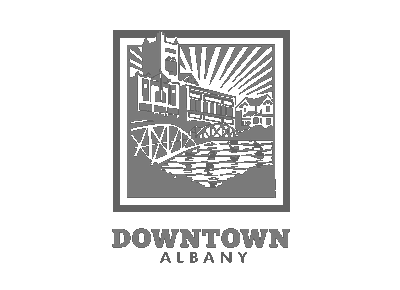The City has a permanent maintenance easement along both sides of the canal. It is necessary for workers to walk or access the canal along its banks in order to inspect the channel and carry out repairs. While some vegetation helps stabilize banks, it must also allow inspection and repair.
Garden Planning
Establishing a beautiful, low-maintenance planting requires selecting the appropriate plant for the types of growing conditions in your landscape. For example, each plant requires a certain amount of sun or shade, prefers different levels of soil moisture, and may have particular maintenance needs. The more you learn about the conditions in the area you wish to plant, the more likely you are to succeed in selecting plants that will thrive.
The illustrations show typical moisture levels in relation to the canal water level. When designing your planting and fencing, it is important to make sure maintenance personnel can access the canal for regular inspections. The plant lists provided below should help guide you.
Planting for erosion control and bank stabilization
Choosing plants of varying heights and structures (trees, shrubs, and groundcovers) helps prevent erosion in two important ways.
- The above-ground structure of plants (the stems, branches, and leaves) intercepts rain and slows its progress, lessening its impact as it lands on the ground. This reduces the erosive force of the rain.
- The underground structure of plants (roots and rhizomes) anchors soil and keeps it from washing away or breaking free of the bank in the canal. Root systems also provide natural channels for water to infiltrate into the ground, decreasing runoff.
It is important to plant the canal banks so that the soil remains intact and protected. From both above and below ground, plants work to protect the soil from being lost to the powerful force of water.
Why native plants?
There are several important reasons to use native plants rather than ornamental or cultivated varieties. First, plants that are native to our region are already adapted to local climate, soil, and water conditions and reduce the need for added water, fertilizer, or pesticides. Most native plants need little or no maintenance, which means less time spent mowing and pruning. Native plants also support local ecosystems, providing food and shelter for birds, butterflies, and other wildlife. In short, native plants can save people time and money and are good for our environment.
Planting trees
While trees provide shade and habitat, they are a major problem if planted too close to the canal bank, as some soils in the valley are loose and the canal banks are steep. The banks simply cannot bear the weight of a grown tree. Weakened banks can lead to trees falling over and damaging your property, fences, and buildings. When a tree falls, it also can take a large portion of the bank with it, dropping sediment into the channel where it clogs the culverts and adds to visible turbidity.
For these reasons, the City strongly advises citizens to plant trees at least 10 feet away from the canal edge, also known as the top of bank. This also helps meet our visual inspection requirement. Trees can be planted well back from the canal edge and still provide the aesthetic and ecosystem benefits we seek without compromising the canal structure.
Invasive Plants
Non-native plants can have a place in our urban landscaping, if they’re managed. Some plants are so invasive that the City discourages their use altogether, and some have earned a place on Oregon’s official quarantined list. Plants you may recognize from this list of “DO NOT PLANT” species include:
- Scotch broom
- Butterfly bush
- English ivy
- Yellow flag iris
In addition, the City strongly discourages aggressive plants such as
- St. Johns wort
- Bamboo
- Blackberries, raspberries
Weed management is a special challenge in an urban setting. Keep these in mind:
- NO PESTICIDES MAY BE USED WITHIN 10 FEET OF THE CANAL
- Each species has its own appropriate management technique (pulling, spraying, mowing, etc)
- The wrong type of management technique (pulling, spraying, mowing, etc) can actually do more damage than good
- Early identification is the easiest and least expensive way to control weeds and protect your yard
Three types of plant lists
Three carefully thought-out lists of recommended plants are posted here. We encourage property owners to consult the lists when planning their landscaping, whether property is residential, commercial, or agricultural.
All three lists include extensive information about each species, the types of growing conditions they require, and photos. The plant lists are meant to provide an inspirational place to start planning your planting, but are not meant to restrict the plants you may use. We've taken much care to choose plants that will survive and thrive if planted in the proper location, along with making sure that the plants are available at nurseries within a reasonable distance of Albany and Lebanon. Each list was created with a particular user in mind:
- Urban Plants (View Plant List)
The urban plant list comprises species that will look great and perform well near the home landscape. It provides an extensive plant palette to choose from. The few ornamental species in the urban list are locally hardy and should not interfere with any neighboring native vegetation or landscaping. We have avoided plants which are aggressive and might colonize adjacent properties, such as bamboo or ivy. - Naturalized Area Plants (View Plant List)
This list is for anyone who wishes to use only native plants. Plants on this list can be used in a more naturalized, wild planting, or in a designed landscape. They would be well-suited for large areas where the property owner does not intend to mow or prune frequently and wants a stable, sustainable plant community. - Farm Plants (View Plant List)
This is a short list of species that are appropriate to plant near an agricultural area. All grass species have been reviewed by the Oregon State University Extension Service and will not interfere with local seed crops. The trees, shrubs, and groundcovers are all native species that will be hardy, without seeding or spreading prolifically.
There are lots of resources and information about weeds within the Willamette Valley and how to control them.
List of Links
Native plants
Invasive species




